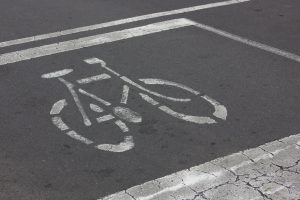Nearly one quarter of all Boston bicycle accidents that result in injury are caused by vehicle drivers or passengers opening their doors into the path of an oncoming cyclist. It’s called “dooring,” and in addition to accounting for a significant number of the total number of bicyclist injuries in Boston, it’s blamed for 40 percent of all cases where a driver is at-fault for injury to a bike rider. It’s also illegal, per Mass. Gen. Law Ch. 90, Section 14. This statute makes it clear that it is the vehicle occupant’s job to wait to open the door until it’s safe to do so without interfering with other moving traffic – which includes both cyclists and pedestrians. 
And yet, these incidents continue to happen, as as bicycle safety advocates note, it has largely to do with the fact that bicycle traffic is still something of an afterthought – if it’s a thought at all – to many American drivers. In the Netherlands, as noted in one New York Times article, it’s far different. Cycling is ingrained into the culture. Everyone cycles. While many cities in the U.S. – including Boston – have dedicated bike lanes for safer bicycle travel, in the Netherlands, bicycles are truly seen as equal vehicles, with not just dedicated lanes, but dedicated traffic lights, parking garages and depots.
This bike-friendly culture is the reason Dutch drivers are taught in driving school that when you are about to exit a vehicle, you reach for the door handle with your right hand. Why? It forces the driver to reach around his or her own body, causing the shoulders and head to turn – which makes it much easier to see if a bicyclist is approaching from behind. Now, as The Boston Globe recently reported, a 70-year-old retired medical doctor and Cambridge cycling advocate is pushing for Bostonian drivers to do the “Dutch Reach.” Continue reading
 According to a recent news article from CBS Boston Local, a 20-year-old woman was riding her bike through a traffic circle when she was involved in a collision with a vehicle that was also in the traffic circle. At this point, the driver in the car that collided with her left the scene of the Boston area bike crash without stopping, or even slowing down to see if she was badly injured. Continue reading
According to a recent news article from CBS Boston Local, a 20-year-old woman was riding her bike through a traffic circle when she was involved in a collision with a vehicle that was also in the traffic circle. At this point, the driver in the car that collided with her left the scene of the Boston area bike crash without stopping, or even slowing down to see if she was badly injured. Continue reading Bike Accident Lawyers Blog
Bike Accident Lawyers Blog



 To meet the needs and protect the safety of the the growing cyclist community, there have been a lot of changes including the addition of bike lanes, some with physical barriers, and there have been renewed efforts to educate motorists on the laws pertaining to bike safety. Unfortunately, there still needs to be a lot of work in both of these area as bike riders are hit by cars on a regular basis, and many drivers do not understand bike riders have the same rights as a vehicle driver while on the streets and roads of Massachusetts.
To meet the needs and protect the safety of the the growing cyclist community, there have been a lot of changes including the addition of bike lanes, some with physical barriers, and there have been renewed efforts to educate motorists on the laws pertaining to bike safety. Unfortunately, there still needs to be a lot of work in both of these area as bike riders are hit by cars on a regular basis, and many drivers do not understand bike riders have the same rights as a vehicle driver while on the streets and roads of Massachusetts.  According to a recent news article from the
According to a recent news article from the  While this may seem obvious if you think of all the riders you see around Boston on a weekly basis, it is not an issue that is given much attention. There are various reasons for so few female bike riders suggested and realizing why this situation exists is the first step in getting more women out on the roads on bikes and bringing more equality to the growing community.
While this may seem obvious if you think of all the riders you see around Boston on a weekly basis, it is not an issue that is given much attention. There are various reasons for so few female bike riders suggested and realizing why this situation exists is the first step in getting more women out on the roads on bikes and bringing more equality to the growing community. 
